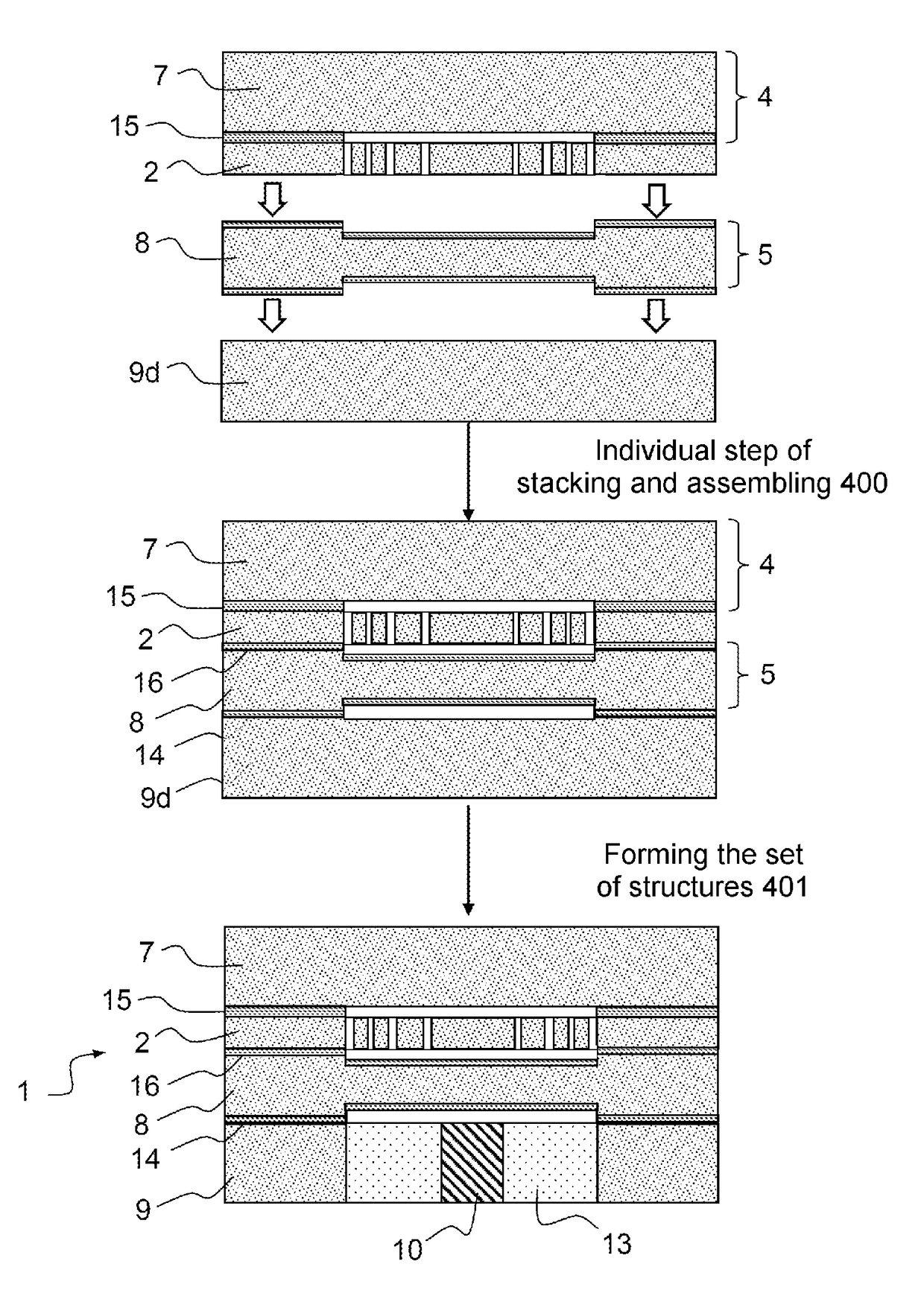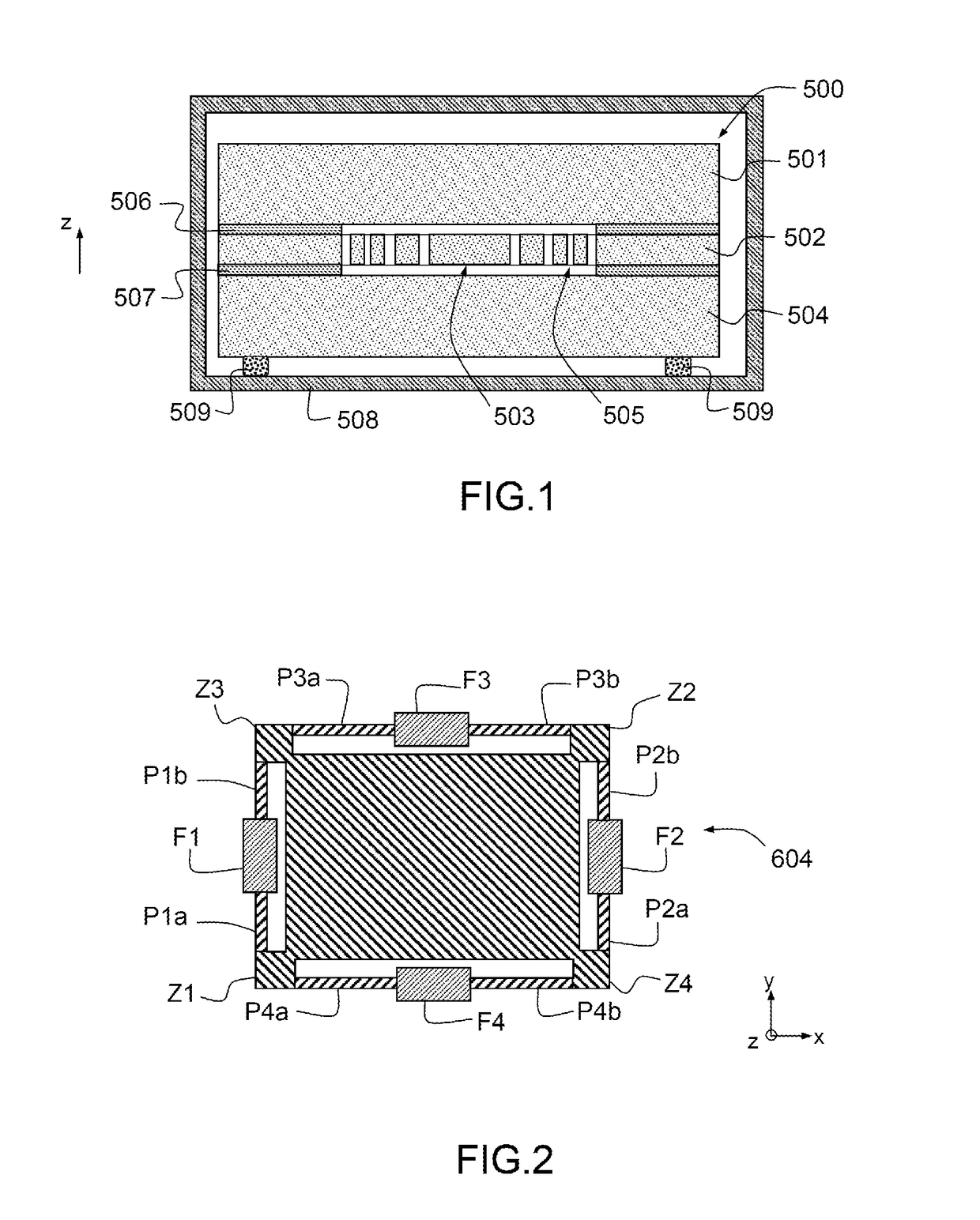Microelectromechanical system and fabricating process
a technology of microelectromechanical systems and fabricating processes, applied in the direction of fluid speed measurement, instrumentation, and semiconductor/solid-state device details, etc., can solve the problems of slow stress variation, output signal of sensors to drift, and inability to compensate for dri
- Summary
- Abstract
- Description
- Claims
- Application Information
AI Technical Summary
Benefits of technology
Problems solved by technology
Method used
Image
Examples
Embodiment Construction
[0058]FIG. 3 schematically shows a cross-sectional view of a microelectromechanical system or MEMS chip according to the invention. The cross section is produced in a plane comprising the stacking direction z.
[0059]The microsystem according to the invention is for example a sensor.
[0060]As may be seen in FIG. 3, the microelectromechanical system 1 or MEMS chip according to the invention comprises an assembly 1e of a plurality of layers stacked in the stacking direction z. The plurality of layers comprises:
[0061]a single-crystal silicon active layer 2, said active layer 2 comprising an active structure 3 of the microelectromechanical system 1, and
[0062]a first cover 4 and a second cover 5 defining a cavity 6 around the active structure 3.
[0063]The active structure 3 is micro-machined in the plane of the silicon layer 2. The active structure is a structure that is able to move, i.e. able to deform freely, with respect to the rest of the active layer 2 and more particularly with respec...
PUM
| Property | Measurement | Unit |
|---|---|---|
| Time | aaaaa | aaaaa |
| Time | aaaaa | aaaaa |
| Shape | aaaaa | aaaaa |
Abstract
Description
Claims
Application Information
 Login to View More
Login to View More - R&D
- Intellectual Property
- Life Sciences
- Materials
- Tech Scout
- Unparalleled Data Quality
- Higher Quality Content
- 60% Fewer Hallucinations
Browse by: Latest US Patents, China's latest patents, Technical Efficacy Thesaurus, Application Domain, Technology Topic, Popular Technical Reports.
© 2025 PatSnap. All rights reserved.Legal|Privacy policy|Modern Slavery Act Transparency Statement|Sitemap|About US| Contact US: help@patsnap.com



